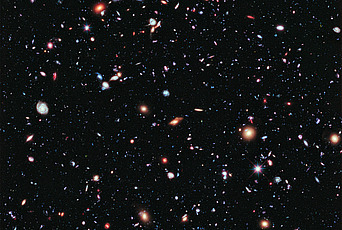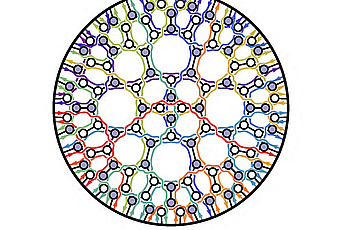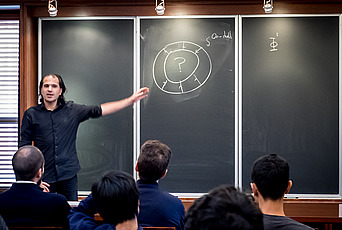ERC Synergy Grant for UNIVERSE+
Press Contact
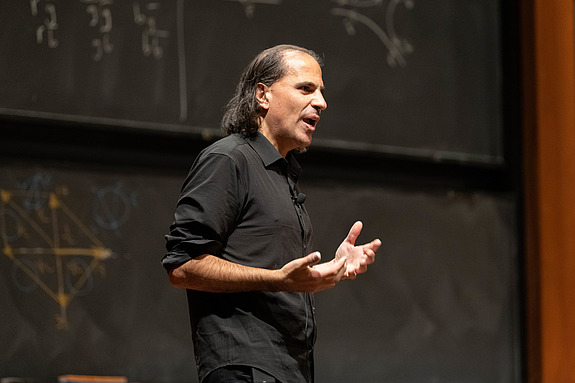
The European Research Council (ERC) has awarded a Synergy Grant of €10 million to the project "UNIVERSE+: Positive Geometry in Particle Physics and Cosmology" led by Nima Arkani- Hamed (IAS), past IAS Members Daniel Baumann (University of Amsterdam) and Johannes Henn (MPI for Physics, Munich), and Bernd Sturmfels (MPI for Mathematics in the Sciences, Leipzig). The team aims to create a new mathematical language to describe physical phenomena on all scales, from the interactions of elementary particles to the large-scale structure of the Universe.
Hidden Geometry of Physical Laws
Spacetime and quantum mechanics lie at the heart of physics, and have led to a spectacularly successful understanding of the laws of Nature. However, these pillars of fundamental physics are expected to be only approximate notions that ultimately must arise from more basic concepts. This is seen most dramatically at the Big Bang singularity, where the notion of a smooth spacetime breaks down.
Recently, novel geometric shapes called "positive geometries" were discovered in the data describing the scattering of elementary particles and the correlated positions of cosmological structures on the sky. "We believe that these positive geometries have caught the tiger by the tail," says Nima Arkani-Hamed, "giving us the first concrete examples of the way in which the principles of spacetime and quantum mechanics can arise from more basic mathematical principles." So far, however, these positive geometries have only been found in simplified toy models of the physical world. The aim of the UNIVERSE+ collaboration is to fully understand and expose these new ideas, and to find the geometries relevant to the real world, including gravity and the expanding universe.
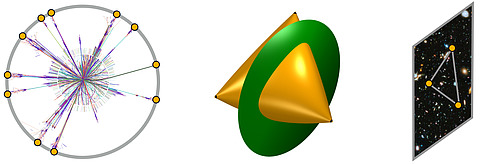
These developments in physics are closely tied to significant advances in mathematics. "Positive geometries are fascinating objects in their own right, independent of the physical settings in which they were discovered," says Bernd Sturmfels. "I believe that positive geometry has a very bright future with great potential to become a vibrant new field at the interface of physics and mathematics. To achieve this requires a coordinated effort by physicists and mathematicians in the years to come, which has now received a significant boost by the ERC Synergy Grant for the UNIVERSE+ Collaboration."
The Team
The principal investigators of UNIVERSE+ bring together complementary expertise in particle physics, cosmology, and mathematics. This is the first collaboration of its kind, made possible by a recent confluence of critical insights in both mathematics and physics. The group aims to attract some of the brightest young people from diverse backgrounds to work on a multifaceted research program with the potential for significant impact on a wide range of scientific topics in particle physics, cosmology and outward-looking mathematics. They will soon be advertising positions for researchers to join the team.
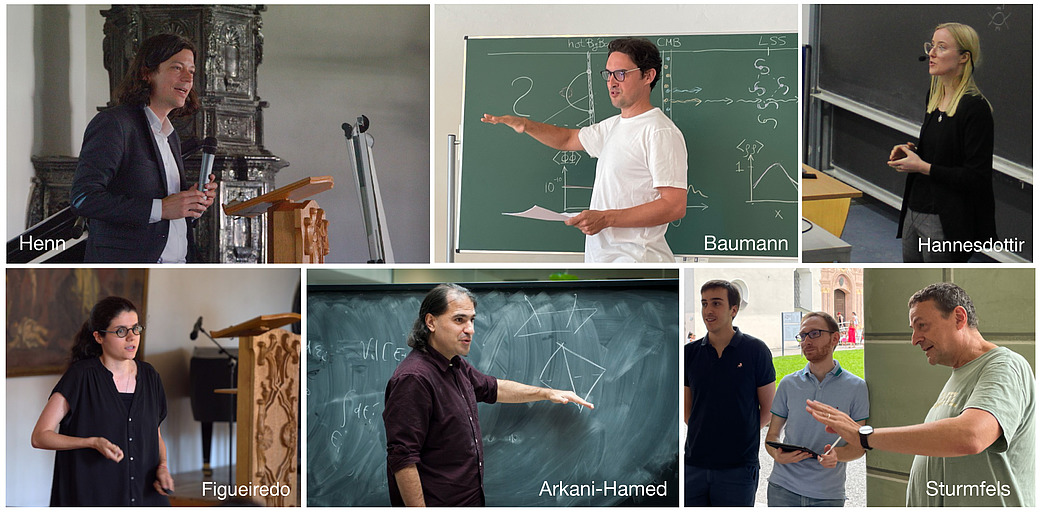
About ERC Synergy Grants
The ERC Synergy Grants fund collaborative projects that, due to their complexity, are carried out by several scientists and their groups, in order to achieve breakthroughs that would not be possible in individual projects. For this purpose, the ERC allocates grants of up to €10 million for a period of six years.
About the Institute
The Institute for Advanced Study has served the world as one of the leading independent centers for theoretical research and intellectual inquiry since its establishment in 1930, advancing the frontiers of knowledge across the sciences and humanities. From the work of founding IAS faculty such as Albert Einstein and John von Neumann to that of the foremost thinkers of the present, the IAS is dedicated to enabling curiosity-driven exploration and fundamental discovery.
Each year, the Institute welcomes more than 200 of the world’s most promising post-doctoral researchers and scholars who are selected and mentored by a permanent Faculty, each of whom are preeminent leaders in their fields. Among present and past Faculty and Members there have been 35 Nobel Laureates, 44 of the 62 Fields Medalists, and 23 of the 26 Abel Prize Laureates, as well as many MacArthur Fellows and Wolf Prize winners.
